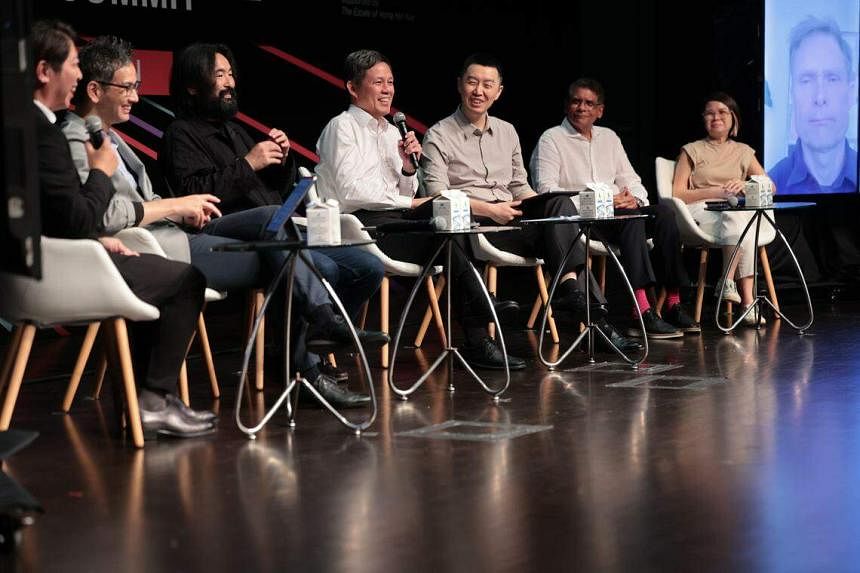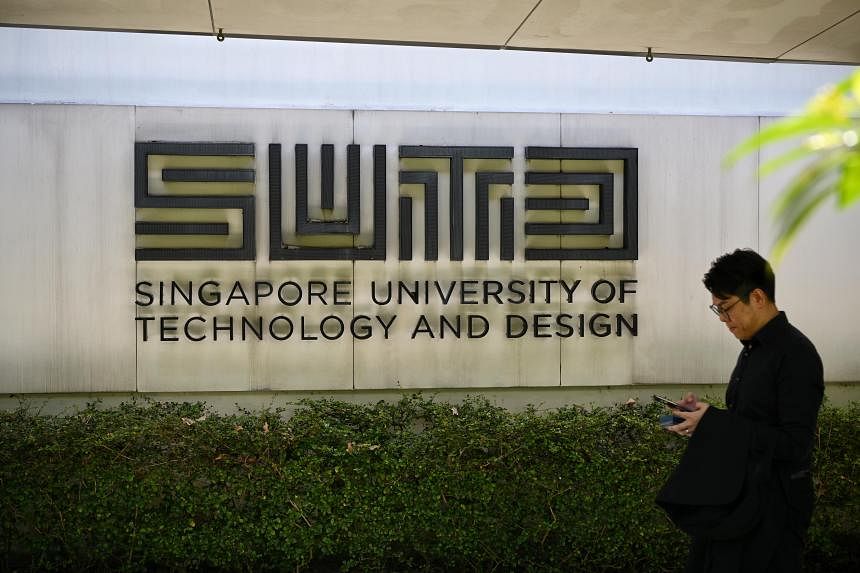SINGAPORE – The Singapore University of Technology and Design (SUTD) has formed a global alliance with 12 institutions to enhance design education.
These include local institutions such as Nanyang Academy of Fine Arts (Nafa) and Lasalle College of the Arts, as well as foreign ones like Tsinghua University Academy of Arts and Design in Beijing and Parsons School of Design in New York.
The alliance, which was launched on May 15, will explore student and faculty exchanges, and other forms of collaboration to bring students from different fields of study together as they solve real-world design problems.
Representatives from the 13 institutions gathered on May 15 at the SUTD Design Innovation Forum-Design Alliance Summit, held at the university, to discuss the impact of artificial intelligence and advanced technology on design and education, among other topics.
Education Minister Chan Chun Sing, who graced the event and participated in a roundtable discussion about the future of education, said design plays an important role in tackling Singapore’s future challenges, such as transitioning to clean energy.
He said design thinking was present in the early years when Singapore had to overcome challenges despite its limited resources, adding that for students to develop design thinking, they should have a deep sense of appreciation for society’s challenges.
Said Mr Chan: “If they (students) truly want to be good designers, they need to fall in love with the problem, rather than the solution, to have a deep understanding of the kind of challenges and the needs of the society.”
He said design should be looked at not only in narrow terms such as the manufacturing of products, but also in a broader context, in terms of shaping policies, bringing people together and making use of Singapore’s finite natural resources.

Mr Chan used the nation’s housing policies and Central Provident Fund scheme as examples of design thinking.
“It’s not just about building flats and houses but how we have housing policies to integrate people from different backgrounds, living harmoniously together, that helps in our social cohesion.
“How we design policies to give people the sense of assurance that they can retire properly, adequately.”
He added that design thinking was also present in urban planning, where every inch of space from the land, sea and air had to be finely designed to accomplish the nation’s goals.
“Singapore is, if you like, excellence by design, and we try not to leave everything to chance. But I think we also appreciate the serendipitous moments where we get inspiration from the exchange of ideas from many of you.”
SUTD president Chong Tow Chong said that in an era fraught with environmental challenges and social transformation, the role of design in society has to be redefined.
SUTD chairman Lee Tzu Yang said that even with the most amazing technological innovation, human needs and challenges have to be addressed.
“Today, our complex challenges such as population health and sustainability call for both technology and design-led innovation to spur behavioural changes for a better outcome,” he said.
“There is a worldwide need for talent in the design and technology field to tackle our most pressing problems.”


